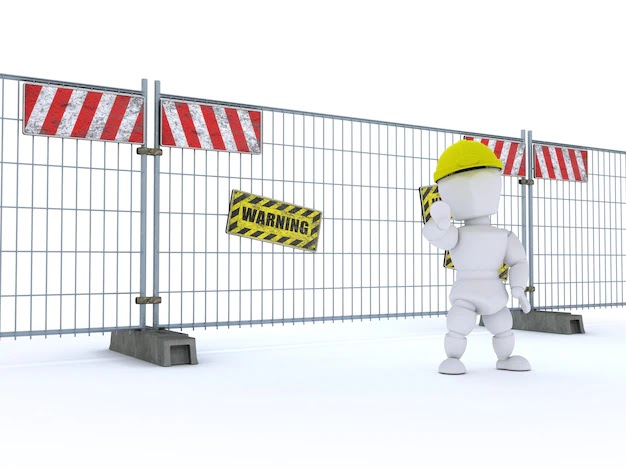
The Role of Flexibility in Planning
I. Why Flexibility is Key to Success
At its core, flexibility in planning is about maintaining the ability to adjust and pivot when necessary. It's not just about managing crises or reacting to sudden changes; it's also about understanding that circumstances, goals, and priorities can evolve over time. When we embrace flexibility, we allow for continuous improvement and growth.
Some of the key reasons why flexibility is crucial include:
- Dealing with uncertainty: No matter how detailed your plans, there will always be factors beyond your control. Flexibility allows you to handle unexpected events without losing momentum.
- Reducing stress: A rigid mindset can lead to frustration when things don’t go according to plan. Flexibility helps you stay calm and adapt more easily, reducing stress and anxiety.
- Encouraging creativity: Being open to change often sparks new ideas and creative solutions that wouldn’t have emerged if you were strictly adhering to a set plan.
- Building resilience: Adaptability fosters resilience by teaching you how to bounce back from setbacks and stay focused on your goals, even when the path shifts.
II. Planning with Flexibility in Mind
While planning is essential for achieving your goals, it’s equally important to incorporate flexibility into your planning process. Here are some practical strategies to help you create plans that are adaptable and can withstand changes:
1. Set Clear Goals but Be Open to Adjustments: When you set goals, it’s important to have a clear vision of what you want to achieve. However, the route to achieving those goals can be fluid. Instead of getting attached to one specific way of reaching your objective, allow room for alternative paths.
For example, if you’re launching a new product and your marketing strategy isn’t yielding the expected results, flexibility allows you to tweak your approach—perhaps by trying new channels or adjusting your messaging—while still working toward your original goal.
2. Use Contingency Planning: Contingency planning involves preparing for unexpected events by identifying potential risks and creating backup plans. When you build contingency plans, you’re not being pessimistic—you’re being prepared.
Ask yourself:
- What could go wrong?
- What steps will I take if things don’t go as planned?
- What resources or support will I need to address potential obstacles?
By outlining alternative courses of action, you can respond to challenges more effectively and minimize disruptions.
3. Prioritize What’s Most Important: Flexibility doesn’t mean throwing out your priorities; it’s about knowing which tasks and goals are essential and which ones are flexible. When things don’t go as planned, prioritization helps you focus on what matters most and make informed decisions about what can be delayed, delegated, or dropped.
For example, if you’re managing a project and a key team member falls ill, you may need to reassign tasks or adjust deadlines. By prioritizing critical tasks, you can keep the project on track without sacrificing quality.
4. Break Your Goals into Manageable Chunks: One way to build flexibility into your planning process is by breaking down your larger goals into smaller, manageable tasks. This approach, often referred to as “chunking,” allows for more frequent progress assessments and adjustments.
If you’re working on a long-term project, breaking it down into weekly or monthly milestones enables you to adapt more easily when something doesn’t go as planned. Smaller chunks of work are easier to re-schedule or adjust, making it simpler to pivot when necessary.
III. Dealing with Unexpected Changes
No matter how flexible your plan, there will inevitably be moments when things go completely off course. Here’s how to stay adaptable when faced with unexpected changes:
1. Pause and Reflect: When things don’t go as planned, your initial reaction might be to rush to fix the situation. However, it’s often more effective to pause and reflect on the best course of action before reacting impulsively.
Take a step back and assess the situation:
- What went wrong?
- What are the potential consequences?
- What are my options moving forward?
This moment of reflection can help you regain control of the situation and make more thoughtful decisions.
2. Embrace the Change: It’s easy to view unexpected changes as negative, but they often present opportunities for growth, improvement, and innovation. Instead of resisting change, try to see it as a chance to explore new approaches.
For example, if a key client decides to back out of a deal, it can feel like a significant setback. However, this situation might provide the opportunity to target new markets or reconsider your pricing strategy. Embracing change can lead to unexpected but valuable outcomes.
3. Seek Support and Input: When dealing with unforeseen challenges, don’t hesitate to seek support from others. Whether it’s colleagues, mentors, or friends, getting input from outside perspectives can provide fresh ideas and solutions you may not have considered.
Collaboration can also help reduce the burden of navigating change on your own. If you’re managing a project that’s suddenly derailed, consulting with your team can help you develop a more effective plan for moving forward.
4. Stay Calm and Positive: Unexpected changes can be frustrating, but maintaining a positive and calm mindset is essential for navigating them successfully. When you approach setbacks with a problem-solving attitude rather than frustration, you’re more likely to find creative solutions and stay productive.
Take a deep breath, remind yourself that change is a part of life, and focus on what you can control rather than dwelling on the things that have gone wrong.
IV. Building Flexibility into Your Daily Routine
Flexibility isn’t just about adjusting your plans when things go wrong—it’s also about adopting habits that make you more adaptable in your day-to-day life. Here are some ways to build flexibility into your daily routine:
1. Adopt a Growth Mindset: A growth mindset, a concept developed by psychologist Carol Dweck, refers to the belief that you can develop your abilities and intelligence through hard work and learning. People with a growth mindset are more adaptable because they view challenges as opportunities for growth rather than obstacles.
By adopting a growth mindset, you’ll be more open to change, learning, and innovation, making it easier to adapt when things don’t go as planned.
2. Schedule Regular Review Sessions: Incorporating regular review sessions into your routine allows you to assess your progress and make adjustments as needed. Whether it’s a daily review of your tasks or a weekly reflection on your goals, these sessions help you stay flexible and proactive.
During your review sessions, ask yourself:
- What went well?
- What challenges did I face?
- What adjustments can I make moving forward?
This process of reflection and adjustment will help you stay on track even when circumstances change.
3. Practice Mindfulness: Mindfulness, the practice of staying present and focused on the current moment, can help you become more flexible by reducing stress and improving your ability to adapt. When you practice mindfulness, you’re better equipped to handle unexpected challenges because you’re more aware of your thoughts, emotions, and reactions.
Mindfulness techniques like deep breathing, meditation, and journaling can help you stay calm, focused, and adaptable in the face of change.
4. Use Time Blocking with Flexibility in Mind: Time blocking is a popular productivity technique that involves scheduling specific blocks of time for focused work. However, to stay flexible, it’s important to build buffer time into your schedule for unexpected tasks or changes.
By allowing some flexibility within your time blocks, you can adjust more easily when new priorities arise or when things take longer than expected.
V. Examples of Flexibility in Action
Sometimes, the best way to understand the value of flexibility is to see it in action. Here are a few examples of how flexibility can be applied in different areas of life and work:
1. In Business: A company that launches a new product might face unforeseen supply chain issues. By remaining flexible, the company can pivot to alternative suppliers, adjust the product’s features, or change its marketing strategy to better fit the new circumstances.
2. In Personal Life: An individual planning a vacation may face weather delays or travel restrictions. Instead of canceling the trip, they can stay flexible by changing the itinerary, finding alternative activities, or rescheduling for a later date.
3. In Career: A professional may face a sudden layoff or industry downturn. By staying adaptable, they can explore new opportunities, upskill in areas of demand, or even pivot to a different career path entirely.

Conclusion
While planning is essential for success, the role of flexibility in planning is that the flexibility is the key to navigating life’s inevitable uncertainties. By building adaptability into your plans and daily routines, you can stay focused on your goals while adjusting to changes as they arise. Whether it’s through contingency planning, prioritization, or maintaining a growth mindset, flexibility allows you to handle setbacks with grace and continue moving forward.
In the end, it’s not just about having a plan—it’s about being able to adapt when that plan doesn’t go as expected.
FAQ
Ques 1: Why is flexibility important in planning?
Ans: Flexibility is crucial because life is unpredictable, and no plan is foolproof. It allows you to adapt when unexpected challenges arise, keeping you on track even when circumstances change. Flexibility helps reduce stress, fosters creative problem-solving, and builds resilience by enabling you to adjust your approach without losing sight of your goals.
Ques 2: How can I incorporate flexibility into my planning process?
Ans: You can build flexibility into your planning by setting clear goals while staying open to alternative paths to achieve them. Break tasks into smaller, manageable chunks to allow for easier adjustments. Use contingency planning to prepare for potential obstacles, and prioritize tasks so you know which responsibilities can be shifted or delayed if needed.
Ques 3: What should I do when things don’t go as planned?
Ans: When things don’t go as planned, pause and reflect on the situation. Assess what went wrong, consider your options, and embrace the change as an opportunity for growth. Stay calm, seek input from others if necessary, and adjust your approach to keep moving toward your objectives.
Ques 4: How can I stay flexible in my day-to-day routine?
Ans: Stay flexible by adopting a growth mindset, scheduling regular review sessions to assess progress, and practicing mindfulness to manage stress. You can also use time-blocking techniques that include buffer time for unexpected tasks or delays, allowing for smoother transitions when changes arise.
Ques 5: What are some real-life examples of flexibility in action?
Ans: In business, companies often face supply chain issues and must pivot to alternative strategies. In personal life, travel plans may change due to weather, leading to alternative itineraries. Flexibility in careers can involve upskilling or changing career paths when faced with unexpected layoffs or industry changes.







Do Leave Your Comment